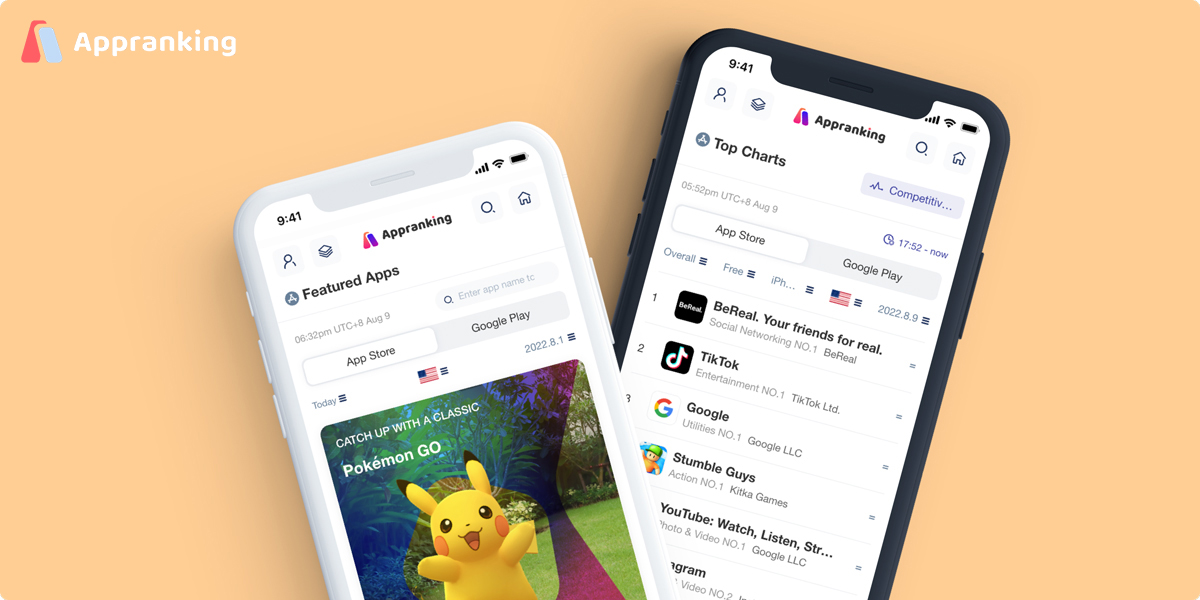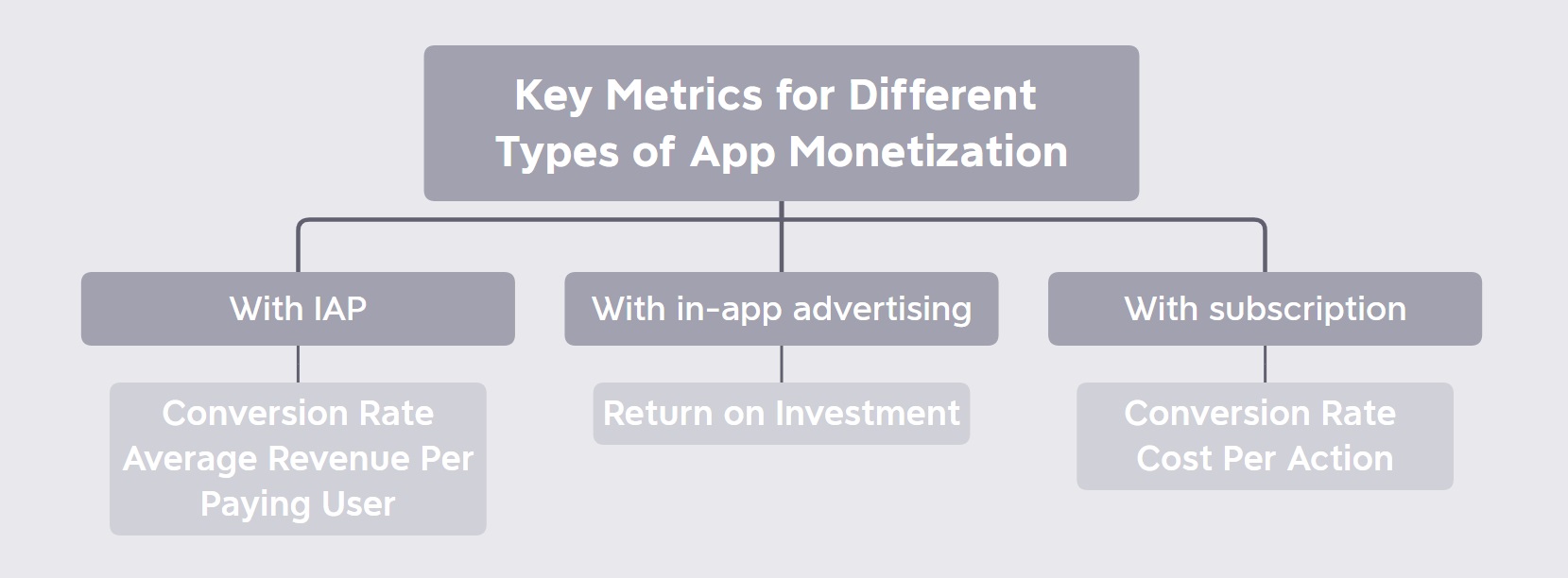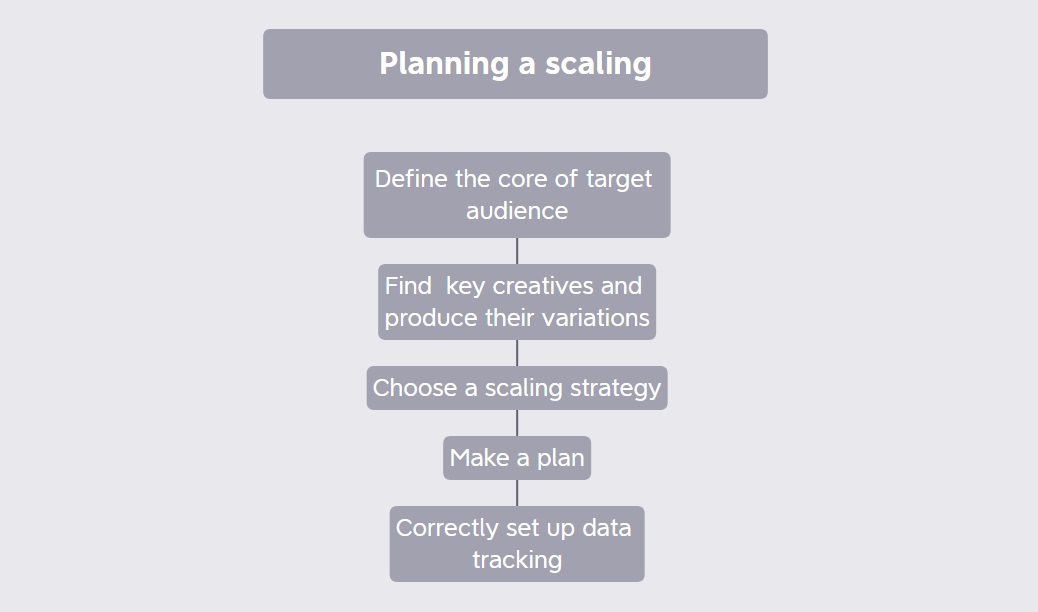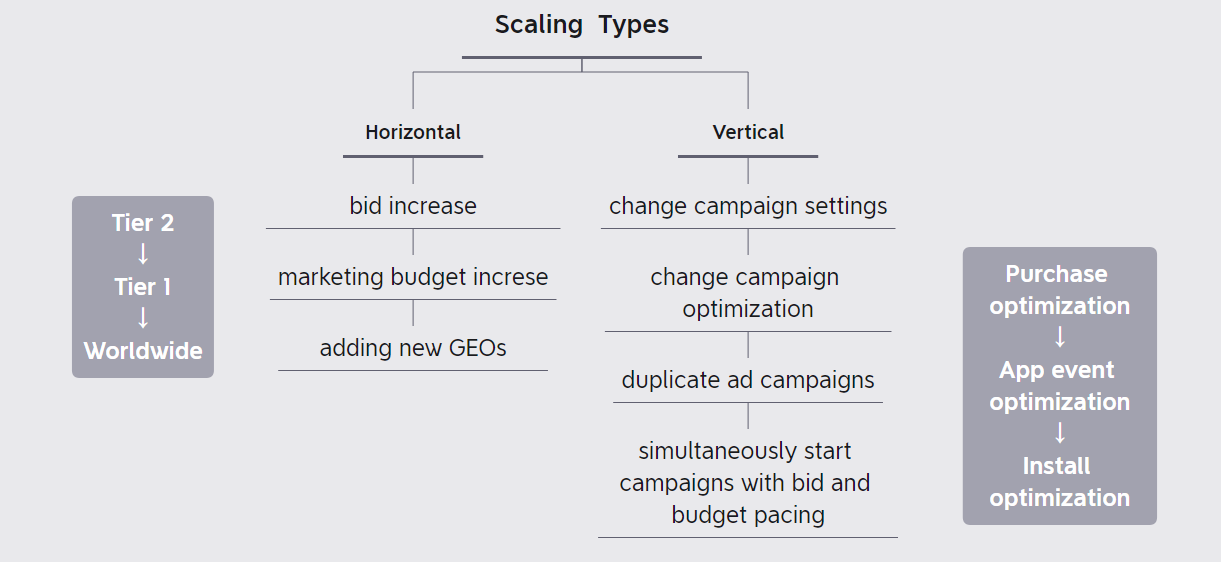
It is true that increasing mobile app revenues is difficult. This growth approach includes scaling ad campaigns, which is difficult as well. As soon as you begin scaling, keep an eye out for a catch. There are instances when the CPI is surprisingly higher, the CPM is out of this world, and the ROI is at best mediocre. However, you can spare time, money, and nerves by being aware of the knowledge mentioned in this article.
Users acquisition is a complete series of activities that conclude several steps:
Getting ready to scale your app user acquisition strategy
Make sure scaling won't hurt your app before you begin. Realistically speaking, your product may occasionally be unfinished and unfit for new users, particularly those in foreign nations. Therefore, gather as much information as you can before making any decisions on extending initiatives.
A product is scale-ready when it has positive unit economics for paid user acquisition, according to the golden rule of app marketing. In other words, within 1-2 days, traffic reaches the payback KPI that was previously estimated.
When everything is ready on the product and marketing sides, scaling may begin. Let's examine the specifics in more detail.
The product side of the matter
Making sure that vital product KPIs are stable is crucial from a product perspective. Each situation requires a different interpretation of what "steady" means. The stats might change significantly from day to day without taking seasonality into consideration. However, those important metrics will generally be more stable the more sponsored traffic that is done on a certain GEO.
So what are the crucial metrics? Once more, it depends on the payback model and is variable for each product. For instance:
- When an app is monetized through in-app purchases, the key metrics are the Conversion Rate (CR) per unique purchase and the Average Revenue per Paying User (ARPPU). These metrics ought to at least adapt to the traffic source and geolocation. When working with app monetization, it's possible to run into "whales"—people that spend a lot of money on an app, raising its earnings. In these circumstances, the daily ARPPU may be unpredictable, but you can rely on the average ARPPU and base your future UA strategy on it.
- When an app is monetized through in-app advertising, the Return on Investment (ROI) of the project becomes a key metric. The publisher's prediction, strategy, costs, and a wide range of other factors all affect how high the ROI should be.
- For SAAS products with a subscription-based model of monetization, the key metric is CR in Trial or direct subscription on a specific paywall and, accordingly, Cost per Action (CPA) related to the abovementioned events.

The marketing side of the matter
In terms of marketing, you should perform the following prior to scaling:
- Test ad creatives.
- Make sure of the stability of your marketing strategies. That is budget increases that are gradual and avoid a sharp spike in cost.
- Verify that the user acquisition department has determined the threshold purchase metrics for the product's return on investment. The budget will be lost if these metrics are exceeded.
Many marketers are unwilling to invest the effort necessary for all these preliminary measures since they require time. But trust us—it's worth it. There is a 90% likelihood of blowing the marketing budget once you begin to rely only on intuition. The secret to the success of your software is a clever and gradual approach. It's time to move on to the next step, planning after your product is prepared for growth.
Starting to scale your app user acquirement plan
The main guideline for growing campaigns is to do so smoothly. The relevant audience for campaigns will unavoidably shrink if traffic quantities are sharply increased, say from $100 to $2000. Target KPIs will deteriorate as a result, with lower CR per install or purchase, lower ARPU, higher CPA, and generally lower return on ad spend.
There are five steps in the planning process, all of which take time. But keep in mind: use a wise and gradual approach.

- Find the heart of the target market with creative testing.
- Find influential artists and create their variants. By doing this, you may greatly postpone the inevitable burnout that every ad creative experiences. Burnout occurs when all potential customers have seen the advertisement and it begins to "bore" them. At the same price, it becomes impossible to draw customers to this creative. While the click-through rate (CTR) and install rate (IR) decline, the cost per mille (CPM) increases. Therefore, the more ready-made creatives you have in your backlog that can be used to launch a new campaign at any time, the higher the visitor volume should be.
- Draw up a scaling plan. There isn't a single set of guidelines that every project must abide by. This resembles an internal step-by-step approach where your marketing budget increases. It is frequently developed using the incoming data from your advertising initiatives.
- Decide between scaling by duplicating advertising campaigns or increasing the budget by N percent over a set period of time empirically. We go into further depth on each one below.
- Ensure that data tracking is configured properly for your campaigns. The advertising platform and the tracker should have as few differences as possible. It would be ideal to also bring any server-side conversions to convergence.
Choosing the type of scaling
Scaling on all traffic sources can be split into two categories: vertical scaling and horizontal scaling.

Horizontal scaling
- raising the budget for advertising;
- raising a bid for a certain impression;
- linking fresh GEOs.
Vertical scaling
- adjusting the campaign's settings, such as choosing different advertising placements, altering the user's age and interests, and targeting similar audiences;
- adjusting campaign optimization: attempting registration, cart abandonment, purchase, and value optimizations. experimenting with working without a bid limit or vice versa, testing various bids and the minimum ROAS value method;
- repeat a campaign that is already in place;
- launching campaigns simultaneously with various budgets and bid pacing.
Conclusion
Scaling requires more thought than simply going with your instincts. Scaling a UA campaign must be planned strategically and in advance. When making a precise decision, sometimes even data from a single platform is insufficient. Therefore, you need to gather as much data as you can. Scaling is therefore never simple, but it is considerably more effective when you have a plan. In the future, we will go ahead with this topic and discuss specific ways of scaling UA campaigns in different situations.
Empower your team with our App Marketing Intelligence
Free forever. Cancel anytime.


